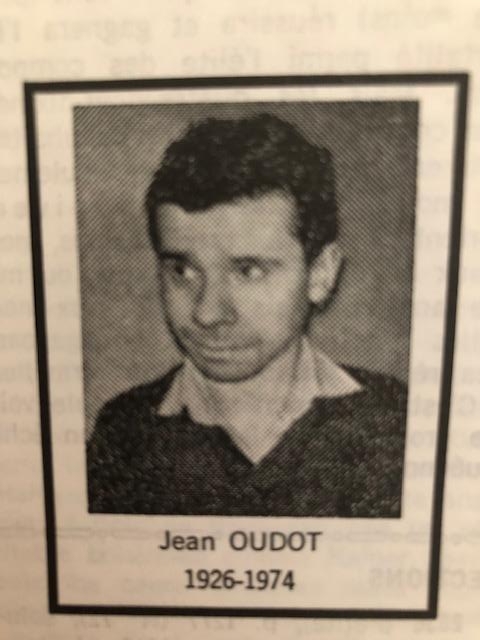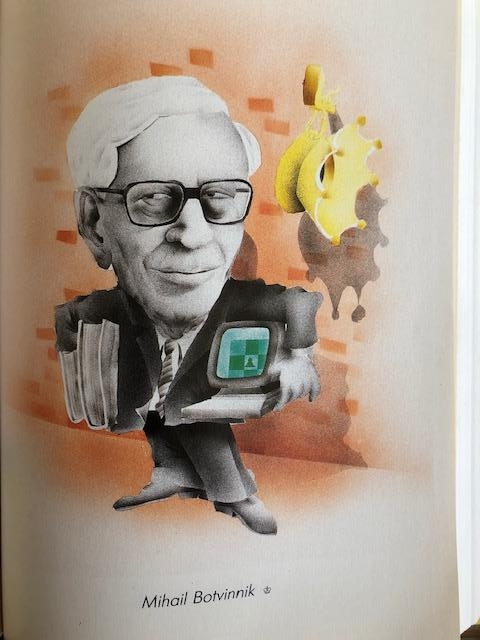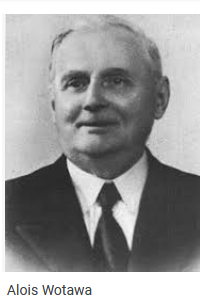Master's words
These three months of rest have been, I hope, beneficial. Let's get back on track with almost all (only two irrelevant 2-mover missing) of the World Problem Solving Championship, which took place in Jurmala (Latvia) at the beginning of the month. The most difficult are: Buhelt's 3#, the helpmate 2# (yes, it is!), the 4# and of course the selfmate 5#. Let's add an extract from the "open tournament" of solutions. The most difficult problem in this other event was undoubtedly that of our friend Guy and only 6 participants out of 113 wrote down the solutions of each triplet; Murdzia, who was to be crowned world champion the following day, found only two out of three.
 Let us end the "problems" section with a last tribute to Jean Oudot, who played an essential role, 45 years ago, in the ad hoc training of your devoted servant. And of course some helpmate, "homework" for Daniel.
Let us end the "problems" section with a last tribute to Jean Oudot, who played an essential role, 45 years ago, in the ad hoc training of your devoted servant. And of course some helpmate, "homework" for Daniel.
 Artistic or (and) technical endgames: an unexpected neutralisation of two pawns in the seventh. A delightfully anachronistic "sealed move" exercise (the suggestion 1 Kf2 is harder to refute than I thought). Finally, in the series, "nature imitates art", a played game that repeats a study composed 16 years earlier. There are correspondences of squares, but only two pairs of "conjugated" squares to speak of. But what pairs! To be studied carefully.
Artistic or (and) technical endgames: an unexpected neutralisation of two pawns in the seventh. A delightfully anachronistic "sealed move" exercise (the suggestion 1 Kf2 is harder to refute than I thought). Finally, in the series, "nature imitates art", a played game that repeats a study composed 16 years earlier. There are correspondences of squares, but only two pairs of "conjugated" squares to speak of. But what pairs! To be studied carefully.

Today's game is based on a famous performance by a fellow countryman of the White player. But you don't teach an old monkey how to make a face. This time it doesn't march! The master clerk being absent, his presumed replacement too, I enclose the raw text of the game. Comments on the attached "chess base" file.
Ponomariov,R (2734) - Shirov,A (2723) [D44]
Wijk aan Zee (4), 15.01.2003
1.d4 d5 2.c4 c6 3.Nf3 Nf6 4.Nc3 e6 5.Bg5 dxc4 6.e4 b5 7.e5 h6 8.Bh4 g5 9.Nxg5 hxg5 10.Bxg5 Nbd7 11.g3 Bb7 12.Bg2 Qb6 13. exf6 0-0-0 14.0-0 c5 15.d5 b4 16.Na4 Qb5 17.a3 exd5 18.axb4 cxb4 19.Be3 Nc5 20.Qg4+ Rd7 21.Qg7 Bxg7 22.fxg7 Rg8 23. Nxc5 Rxg7 24.Nxd7 Qxd7 25.Rxa7 Rg6 26.Rfa1 Re6 27.Bd4 Re2 28.h4 Rd2 29.Be3 Rxb2 30.R1a5 b3 31.Rc5+ Kd8 32.Rxb7 Qxb7 33. Rxd5+ Qxd5 34.Bxd5 Rb1+ 35.Kg2 b2 36.Be4 Rd1 37.Bg5+ Ke8 38.Bf6 b1Q 39.Bxb1 Rxb1 40.h5 Kf8 41.g4 Rd1 42.Bb2 Kg8 0-1
Restaurant part: Guy having joined us was able to treat us to his latest works. It should be noted that the number of prizes he wins is increasing significantly.
I have limited myself to present this first prize of Michel :
MKe7,Qd2,Re4,Bf4,Ng4,Pc7,g7/MKf3,Qa8,Rf8,Bd1,Nh1,Pa7,b3,d3,d4,g2,h2,h3 2#. Kings are "magic": as soon as contact is made with a magic king (whether it is the king playing or a piece approaching it), the colour of the piece in contact automatically changes. Thus 1 Ne5 does not mate because of .....Ke3!!, wQ, wR and wB blackening. But not ...Kg3 because the Ph2 whitens. Nor ...Kxe4 because Pd3 whitens. The diagram contains a wRb1 whose role escapes me. Diagram error?
Solution: 1 Re1? (2 Ne5#) Qd5 (Rf5) 2 Ke6 (Qxd3)# but 1...Bc2!. 1 Bh6! (same threat) Qd5 (Rf5) 2 Qxd3 (Ke6)#. Mats exchanged.
Good reading and see you next Tuesday;
AV
Add a comment